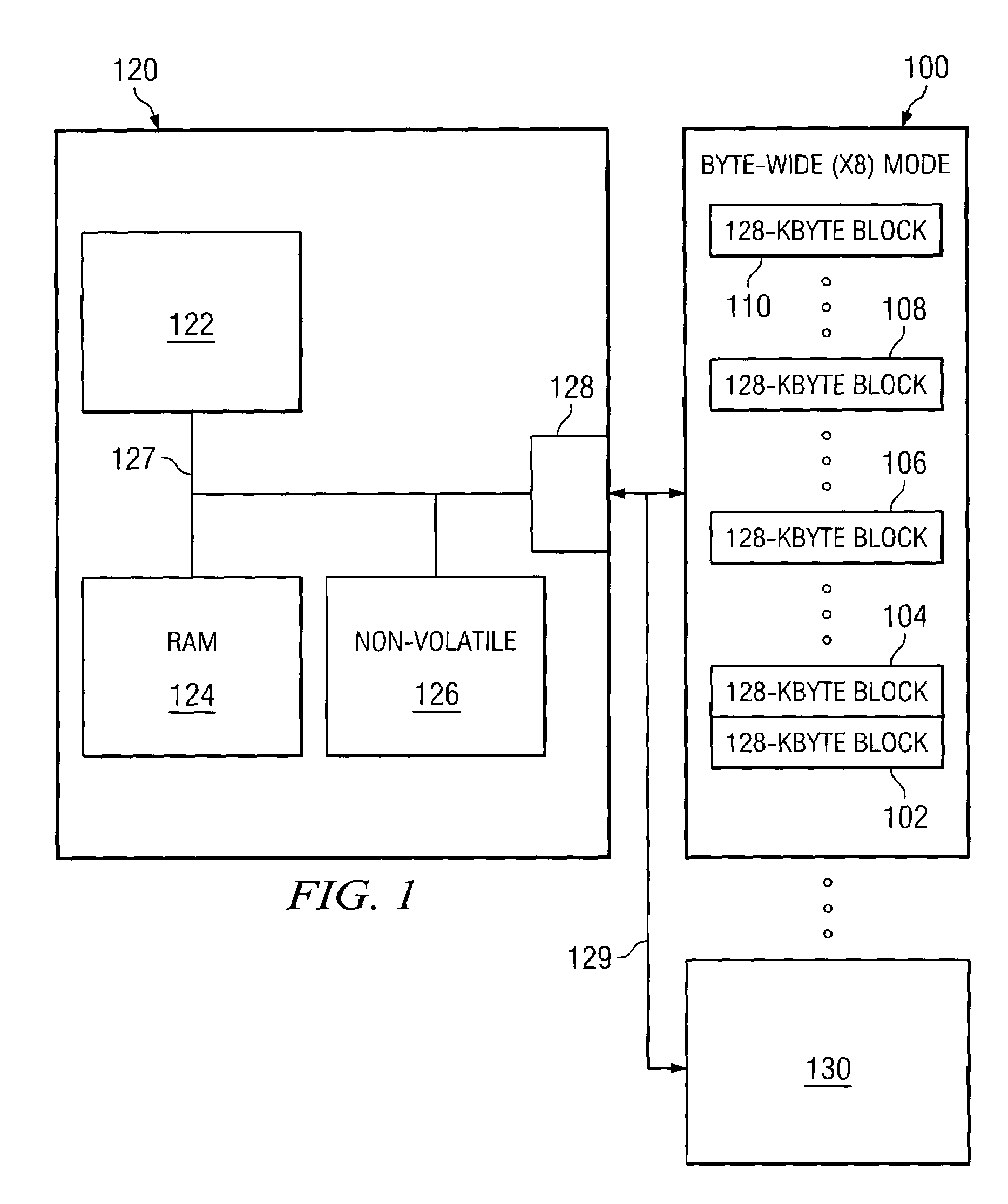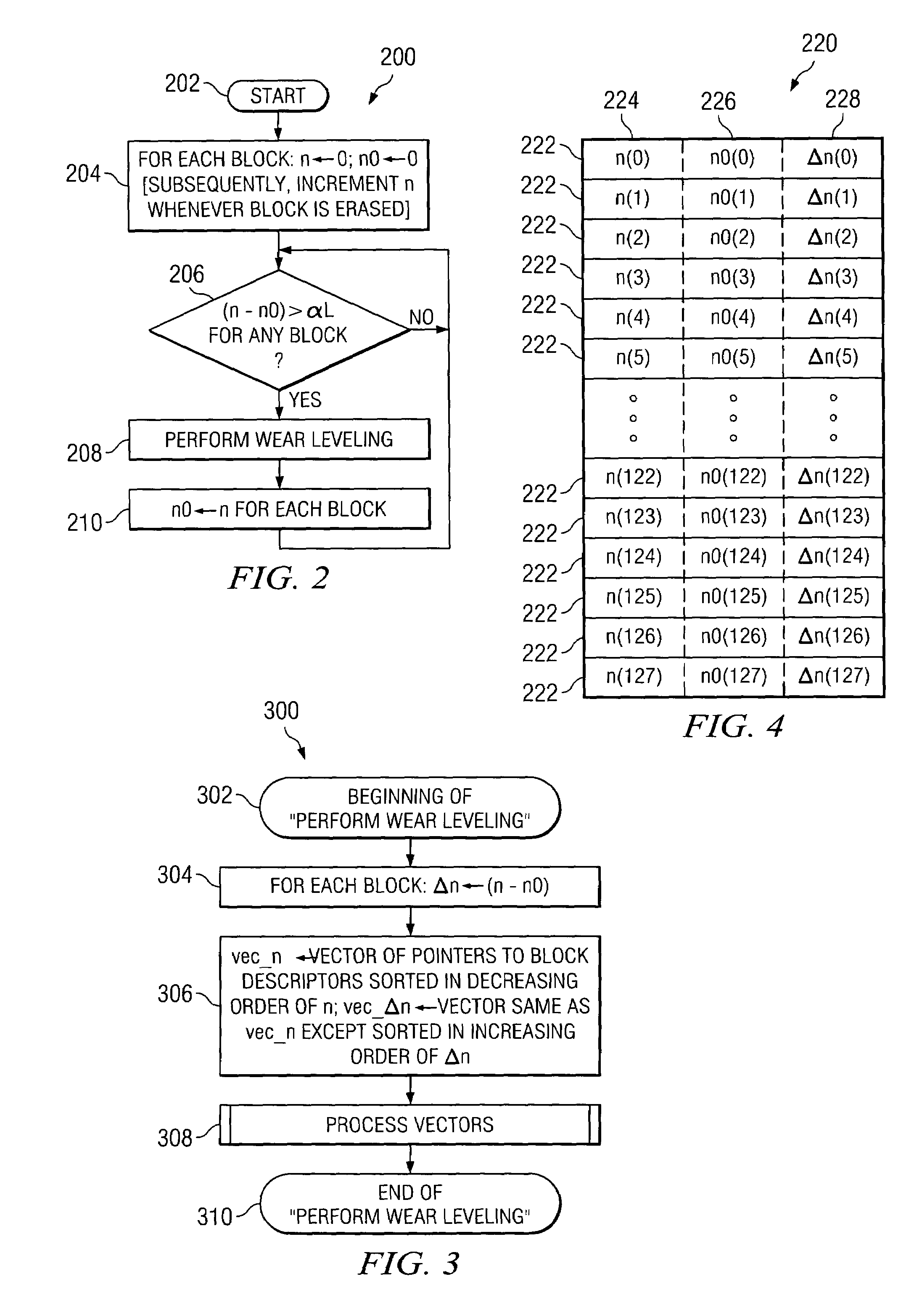Method and system for improving usable life of memory devices using vector processing
- Summary
- Abstract
- Description
- Claims
- Application Information
AI Technical Summary
Benefits of technology
Problems solved by technology
Method used
Image
Examples
Embodiment Construction
[0027]A technique for leveling the wear of a non-volatile integrated circuit device will increase the life of the device by monitoring storage patterns of the device and relocating certain data to other storage locations based on the activity level of the data and the cumulative wear of the storage locations. The technique works particularly well for EEPROM devices such as flash memory, but the techniques can also be used with other types of non-volatile storage devices such as Ovionics Unified Memory (OUM) and Magnetoresistive RAM (MRAM). As used herein, wear-leveling or a wear-leveling event is the process of moving one or more logical blocks from one physical location to another to more evenly distribute the wear of a non-volatile storage device.
[0028]Flash memory comes in many different sizes such as 64 Mbit, 128 Mbit, 256 Mbit, 512 Mbit and 1 Gbit. Technological advances will soon result in even higher storage densities for flash memory. For purposes of the preferred embodiment...
PUM
 Login to View More
Login to View More Abstract
Description
Claims
Application Information
 Login to View More
Login to View More - R&D
- Intellectual Property
- Life Sciences
- Materials
- Tech Scout
- Unparalleled Data Quality
- Higher Quality Content
- 60% Fewer Hallucinations
Browse by: Latest US Patents, China's latest patents, Technical Efficacy Thesaurus, Application Domain, Technology Topic, Popular Technical Reports.
© 2025 PatSnap. All rights reserved.Legal|Privacy policy|Modern Slavery Act Transparency Statement|Sitemap|About US| Contact US: help@patsnap.com



